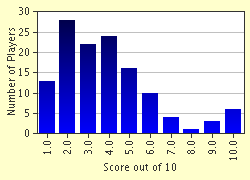Quiz Answer Key and Fun Facts
1. The Genroku Kabuki theatre was so named not only to describe the grand and colorful style, but etymologically so named to mean 'wild and deviant behavior'. What social-economic class did Kabuki originally describe?
2. Who was the Japanese writer first credited with the Tales of the Floating Worlds?
3. Who was the 'Aristotle of Japan' during the Tokugawa period, responsible for the systematic collection of all knowledge in Japan?
4. What is the oldest anthology of Japanese literature, written ca 729, called?
5. After China's defeat, the Treaty of Shimonoseki of 1895, gave Korea to Japan as a protectorate. What pretext did the Japanese use to take away Korea from China?
6. Who were the two greatest disciples of Buddha, literally called the right and left hands of Buddha?
7. Who were the Jusha of the imperial Japanese history?
8. The Japanese borrowed a great deal from the Neo-Confucian school. What did they call this transfer of knowledge?
9. Sesson Shukei was a famous painter of Japan. He was also a well-known calligrapher. He was known as a painter who used perfect brushstokes and splash techniques. In what period of Japanese history was he active?
10. The Silver and Gold Pavilions in the Kyoto-Style of art were influenced by which philosophical school of thought?
Source: Author
thejazzkickazz
This quiz was reviewed by FunTrivia editor
minch before going online.
Any errors found in FunTrivia content are routinely corrected through our feedback system.


